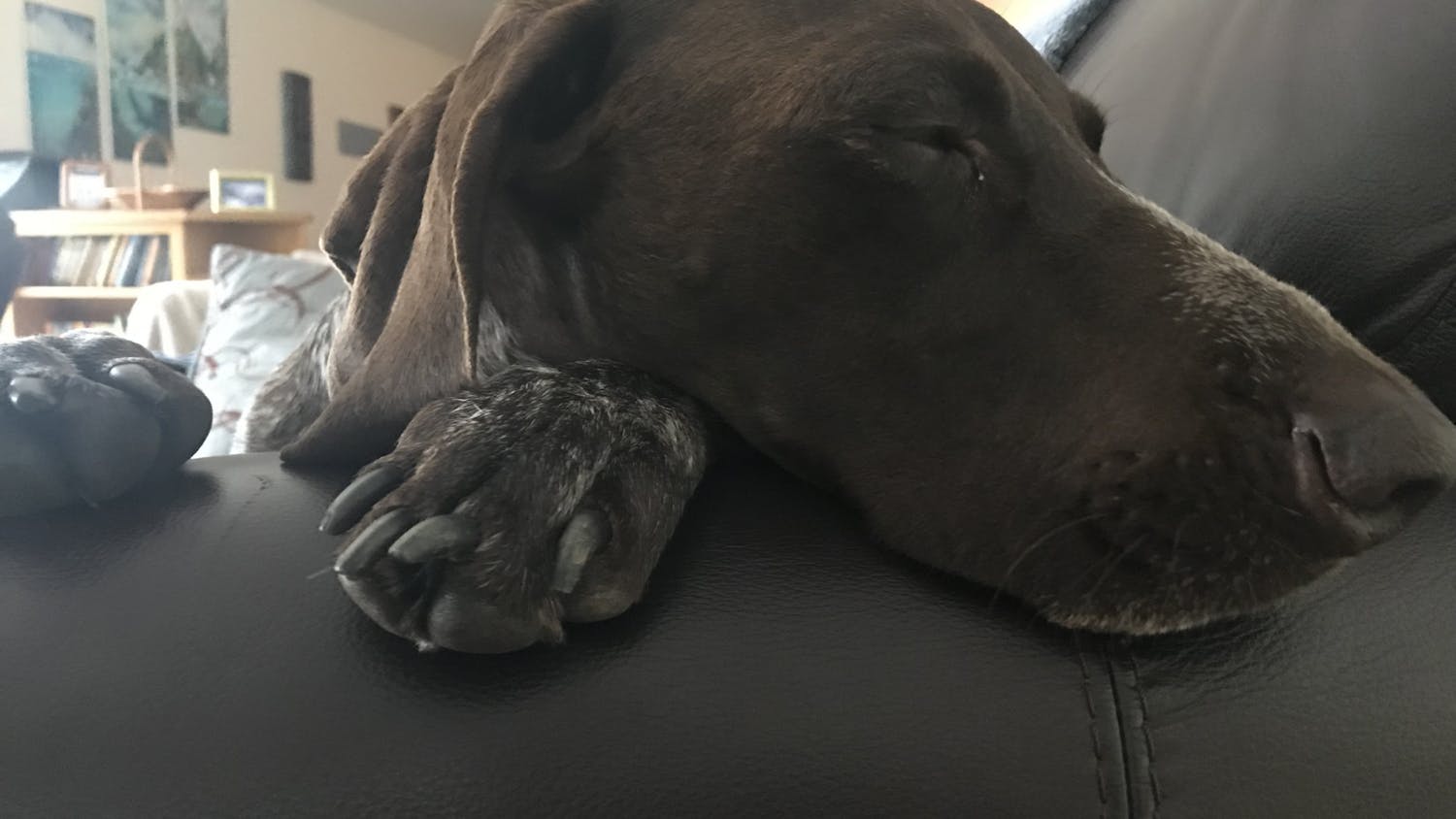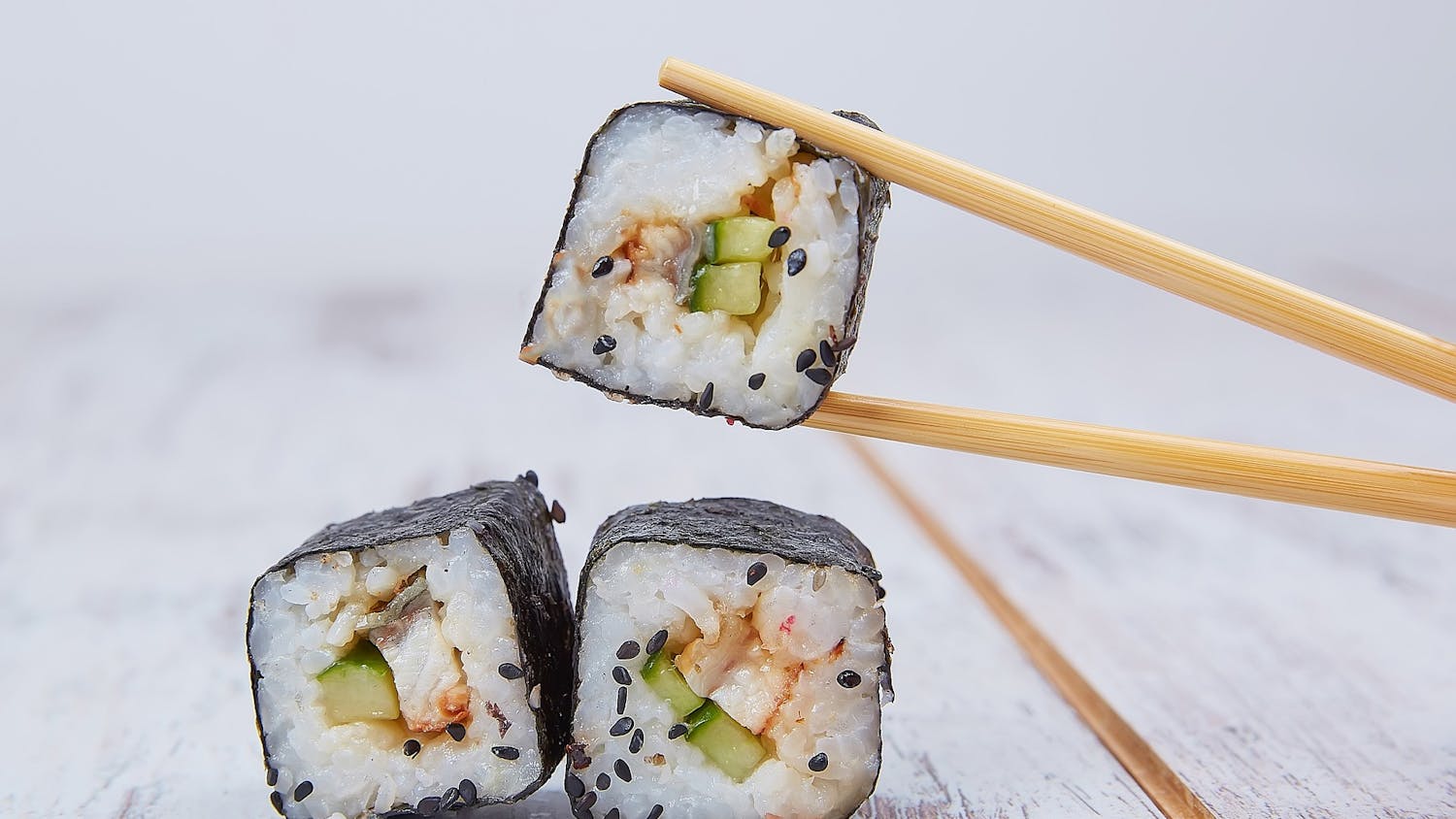In the back corner of the Dakota Gallery is a bright orange shrine. The mock-altar is comprised of several tall candles surrounding a small TV that is playing a looped commercial for skin whitening soap.
Scattered around the shrine are dozens of bars of the soap that are being advertised. The clean, white walls lining the rest of the spacious room are home to videos, photography and mixed-media art, all highlighting the bicultural experience in America.
The Dakota Gallery is now home to the Biyak exhibit.
The exhibit focuses on the struggles associated with being bi-cultural by artists Jasmine Escalante and Ella Ordona. Both women moved to the United States when they were young and have grown up feeling caught between their two cultures: Filipino and American.
The exhibit is comprised of individual pieces from Escalante and Ordona, as well as one shared project - the shrine.
“It’s funny because it was just a bunch of ideas at first, but then it all kind of coalesced really nicely,” Ordana said.
For many, being bicultural means feeling split between their home culture or family's culture, and their new American culture. The name Biyak reflects this feeling of being pulled in two different directions.
Biyak means “to split in half” in Tagalog, a language spoken in the Philippines, Escalante said.
Friday, July 1 was the opening reception for the exhibit which will run through June 30.
The Biyak exhibit has been in the works for over a year. Ordona, 28, said she and Escalante, 23, were talking about shared experiences one day, and decided to make a show.
“Growing up and seeing that we did not look like what was seen to be the ‘ideal’; just kind of wanting and trying very hard to obtain that goal, but knowing that it’s unattainable.”
Jasmine Escalante
Both women agreed their collaboration was their favorite piece in the show. The display is meant to be a shrine of sorts. The focus is a skin-whitening soap, which Ordona says is a problem in the Philippines.
“It’s huge in the Philippines, [and there are] lots of commercials for it,” Ordona said.
Ordona said many women try to whiten their skin in order to fit in better in America. She said her and Escalante’s goal was to comment on the struggle of assimilating to Western-American culture.
Matthew Morassutti, 23, said the shrine was his favorite piece at the show.
“I put on the headphones and it’s super creepy,” Morassutti said. “There’s crazy stuff that’s on TV, like ‘make your skin white and smooth.’”
Throughout the evening, the orange corner of the room was by far the most popular. People crowded around the display to see the sobering reality of the lengths people will go to in order to assimilate into a new culture.
Ordona said her own experiences were also inspiration for the piece.
“Growing up and seeing that we did not look like what was seen to be the ‘ideal’; just kind of wanting and trying very hard to obtain that goal, but knowing that it’s unattainable,” Escalante said.
For her, her art focuses heavily on the concept of identity and the idea of feeling pulled in two directions.
“I think a lot about immigration, the effects of immigration, and diaspora,” Escalante said.
Ordona also connects heavily with the concept of being stuck between two cultures.
After moving to America from the Philippines when she was 12, Ordona had to learn how to balance the two separate cultures the now was part of.
“I was back-and-forth all the time and I never felt like I fit in,” Ordona said.
Similarly, she said that her interests seemed to compete against each other. While her passion was art, her family pushed for a more science-based career path.
“My family always wanted me to be more in the science realm, so my whole life I was trying to fit into just science, not knowing that you can do both,” Ordona said. “It’s not a one or the other thing.”
She might have found a compromise; Ordona is studying art and computer science at Western.
“I’m hoping to somehow combine the two degrees,” Ordona said. “But also use it to affect change in the developing world.”
While Escalante’s passion has always been art, she wanted to avoid the art school route as much as possible.
“I was just like, ‘I need to do something that will get me money’, but I ended up just doing it anyway,” Escalante said. “I couldn’t stop it.”
Escalante graduated from Western in the spring of 2016 with her Bachelors of Fine Arts degree. She wants to continue to make art while she works toward getting her Masters.
EDITOR'S NOTE:
On Wednesday, July 20, the article was published online that Jasmine Escalante moved to the United States after she was born. Jasmine Escalante did not move to the United States when she was younger. She was born in the United States after her parents emigrated to the United States. 7/20/2016.





